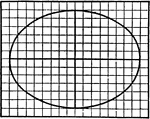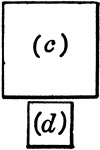
Double Arrow
Tangrams, invented by the Chinese, are used to develop geometric thinking and spatial sense. Seven figures…

Duck
Tangrams, invented by the Chinese, are used to develop geometric thinking and spatial sense. Seven figures…

Duck
Tangrams, invented by the Chinese, are used to develop geometric thinking and spatial sense. Seven figures…

Duck
Tangrams, invented by the Chinese, are used to develop geometric thinking and spatial sense. Seven figures…

Duck
Tangrams, invented by the Chinese, are used to develop geometric thinking and spatial sense. Seven figures…
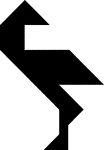
Egret Facing Backward
Tangrams, invented by the Chinese, are used to develop geometric thinking and spatial sense. Seven figures…

Egret Facing Backward
Tangrams, invented by the Chinese, are used to develop geometric thinking and spatial sense. Seven figures…
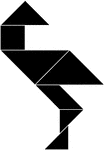
Egret Facing Backward
Tangrams, invented by the Chinese, are used to develop geometric thinking and spatial sense. Seven figures…
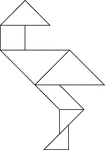
Egret Facing Backward
Tangrams, invented by the Chinese, are used to develop geometric thinking and spatial sense. Seven figures…

Egret Facing Forward
Tangrams, invented by the Chinese, are used to develop geometric thinking and spatial sense. Seven figures…

Egret Facing Forward
Tangrams, invented by the Chinese, are used to develop geometric thinking and spatial sense. Seven figures…

Egret Facing Forward
Tangrams, invented by the Chinese, are used to develop geometric thinking and spatial sense. Seven figures…

Egret Facing Forward
Tangrams, invented by the Chinese, are used to develop geometric thinking and spatial sense. Seven figures…
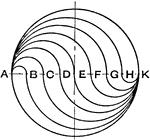
Mechanical Drawing Exercise Three Inscribed Squares with Rounded Corners using Triangle and Bow
"With a 45 degree triangle draw lines AC and BD through the center and construct three squares. Set…

First Right Square Octahedron
"Science has succeeded in classifying the thousands of known crystals in six systems, to each of which…

First Right Square Prism
"Science has succeeded in classifying the thousands of known crystals in six systems, to each of which…

Fisherman
Tangrams, invented by the Chinese, are used to develop geometric thinking and spatial sense. Seven figures…

Fisherman
Tangrams, invented by the Chinese, are used to develop geometric thinking and spatial sense. Seven figures…

Fisherman
Tangrams, invented by the Chinese, are used to develop geometric thinking and spatial sense. Seven figures…

Fisherman
Tangrams, invented by the Chinese, are used to develop geometric thinking and spatial sense. Seven figures…
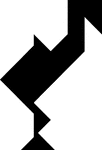
Flamingo
Tangrams, invented by the Chinese, are used to develop geometric thinking and spatial sense. Seven figures…

Flamingo
Tangrams, invented by the Chinese, are used to develop geometric thinking and spatial sense. Seven figures…
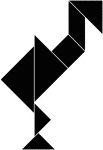
Flamingo
Tangrams, invented by the Chinese, are used to develop geometric thinking and spatial sense. Seven figures…

Flamingo
Tangrams, invented by the Chinese, are used to develop geometric thinking and spatial sense. Seven figures…
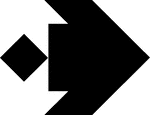
Flounder
Tangrams, invented by the Chinese, are used to develop geometric thinking and spatial sense. Seven figures…

Flounder
Tangrams, invented by the Chinese, are used to develop geometric thinking and spatial sense. Seven figures…
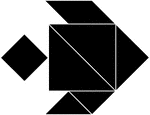
Flounder
Tangrams, invented by the Chinese, are used to develop geometric thinking and spatial sense. Seven figures…
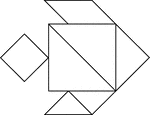
Flounder
Tangrams, invented by the Chinese, are used to develop geometric thinking and spatial sense. Seven figures…
Flower
Tangrams, invented by the Chinese, are used to develop geometric thinking and spatial sense. Seven figures…
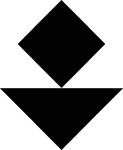
Flower
Tangrams, invented by the Chinese, are used to develop geometric thinking and spatial sense. Seven figures…
Flower
Tangrams, invented by the Chinese, are used to develop geometric thinking and spatial sense. Seven figures…
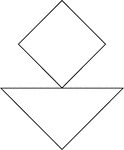
Flower
Tangrams, invented by the Chinese, are used to develop geometric thinking and spatial sense. Seven figures…
Flower
Tangrams, invented by the Chinese, are used to develop geometric thinking and spatial sense. Seven figures…
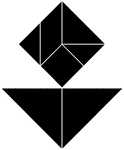
Flower
Tangrams, invented by the Chinese, are used to develop geometric thinking and spatial sense. Seven figures…
Flower
Tangrams, invented by the Chinese, are used to develop geometric thinking and spatial sense. Seven figures…

Flower
Tangrams, invented by the Chinese, are used to develop geometric thinking and spatial sense. Seven figures…

Fort Matanzas
Tangrams, invented by the Chinese, are used to develop geometric thinking and spatial sense. Seven figures…

Fort Matanzas
Tangrams, invented by the Chinese, are used to develop geometric thinking and spatial sense. Seven figures…

Fort Matanzas
Tangrams, invented by the Chinese, are used to develop geometric thinking and spatial sense. Seven figures…

Fort Matanzas
Tangrams, invented by the Chinese, are used to develop geometric thinking and spatial sense. Seven figures…

Giraffe
Tangrams, invented by the Chinese, are used to develop geometric thinking and spatial sense. Seven figures…

Giraffe
Tangrams, invented by the Chinese, are used to develop geometric thinking and spatial sense. Seven figures…

Giraffe
Tangrams, invented by the Chinese, are used to develop geometric thinking and spatial sense. Seven figures…

Giraffe
Tangrams, invented by the Chinese, are used to develop geometric thinking and spatial sense. Seven figures…
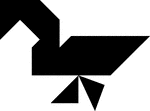
Goose
Tangrams, invented by the Chinese, are used to develop geometric thinking and spatial sense. Seven figures…
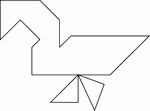
Goose
Tangrams, invented by the Chinese, are used to develop geometric thinking and spatial sense. Seven figures…
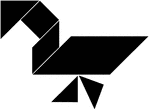
Goose
Tangrams, invented by the Chinese, are used to develop geometric thinking and spatial sense. Seven figures…
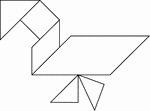
Goose
Tangrams, invented by the Chinese, are used to develop geometric thinking and spatial sense. Seven figures…

Hammer
Tangrams, invented by the Chinese, are used to develop geometric thinking and spatial sense. Seven figures…

Hammer
Tangrams, invented by the Chinese, are used to develop geometric thinking and spatial sense. Seven figures…

Hammer
Tangrams, invented by the Chinese, are used to develop geometric thinking and spatial sense. Seven figures…

Hammer
Tangrams, invented by the Chinese, are used to develop geometric thinking and spatial sense. Seven figures…

Hexagon
Tangrams, invented by the Chinese, are used to develop geometric thinking and spatial sense. Seven figures…

Hexagon
Tangrams, invented by the Chinese, are used to develop geometric thinking and spatial sense. Seven figures…
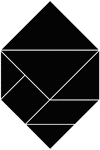
Hexagon
Tangrams, invented by the Chinese, are used to develop geometric thinking and spatial sense. Seven figures…



